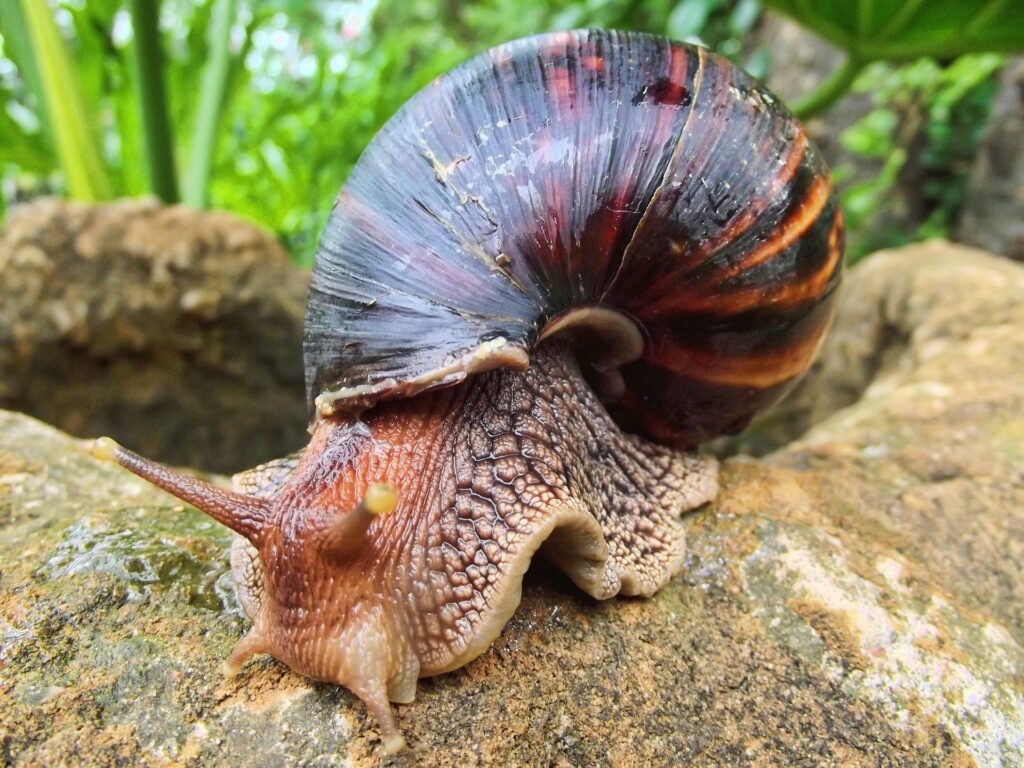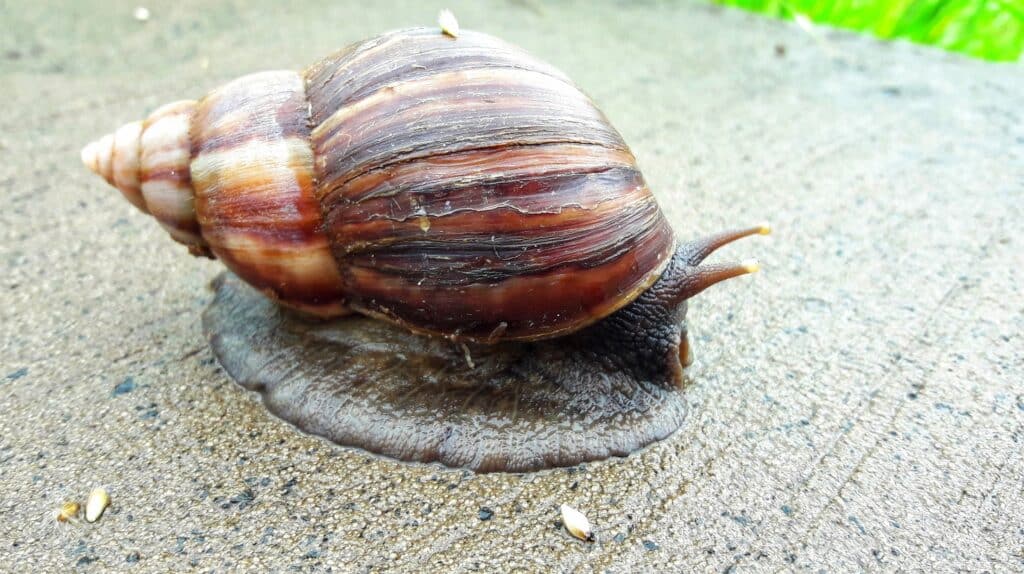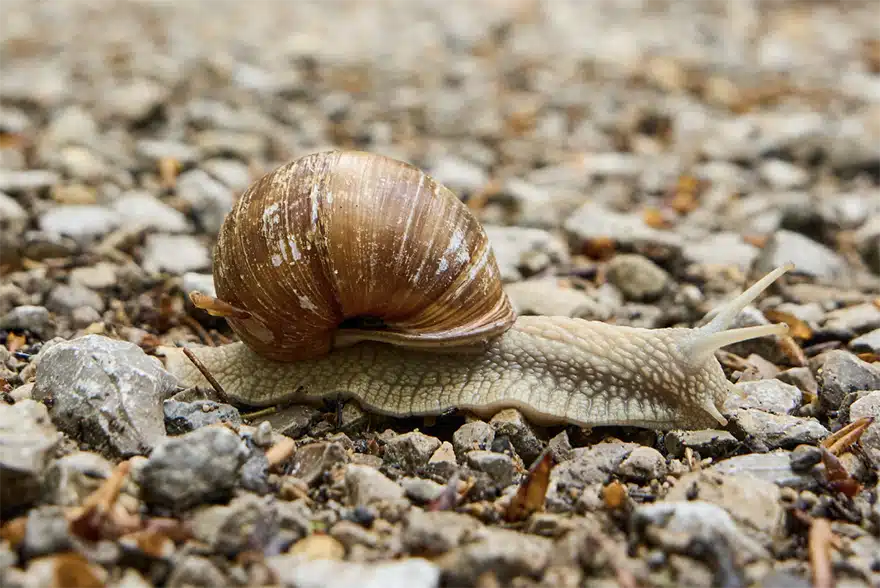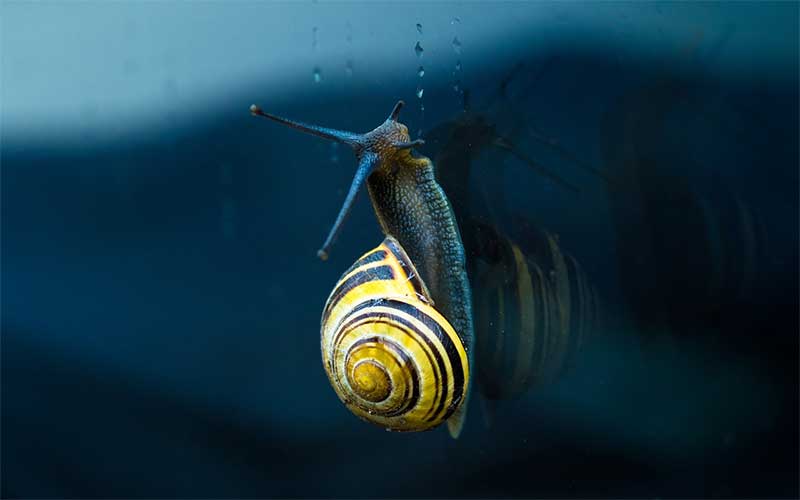Have you ever seen a giant African snail? These massive mollusks are the largest land snails in the world, and they’re definitely a sight to behold!
Read on to learn everything you need to know about these fascinating creatures.
The Giant African Snail
Giant African snails (Lissachatina fulica) are a species of air-breathing land snail native to parts of Africa. As their name suggests, these snails are absolutely massive, with some individuals reaching up to 8 inches in length!
In addition to their large size, they are also distinguished by their dark brown or black shells, which have a glossy sheen. The shells of these snails are quite thick, and they’re covered in ridges and bumps.

Life Cycle of Giant African Snails
Although the giant African snail has both male and female reproductive organs, making them a hermaphrodite, they still need to mate in order to reproduce.
The mating process begins when two snails touch each other’s tentacles. This contact triggers the release of love darts from each snail’s body. These darts are basically hypodermic needles that pierce the skin of the other snail, delivering a dose of mucus containing hormones that induces ovulation in the female reproductive organs.
Egg laying usually occurs a few days after mating, with each snail producing around 100 eggs at a time. They typically lay these eggs in moist soil or leaf litter, where they incubate for around two weeks before hatching into tiny baby snails.
Newly hatched snails consume their egg shell and organic material in the soil, staying buried for 1–2 weeks before making their way to the surface. They stay close to the hatch site at first but soon begin dispersing in search of food as they get older. Baby giant African snails grow quickly, reaching maturity within 6-9 months and can live for up to 9 years in the wild.
What Kind of Habitat Do Giant African Snails Thrive In?
Giant African snails are nocturnal creatures found in tropical and subtropical regions of Africa, including:
- Nigeria
- Benin
- Togo
- Ghana
- Senegal
- Ivory Coast
The snail was first introduced to other continents in the early 1900s, accidentally hitching a ride on ships carrying tropical plants. Since then, the snail has spread to more than 50 countries.
These snails spend most of the day hiding in the dark and prefer warm, moist climates. They typically prefer to stay close to the ground, and often hide under rocks or debris. Giant African snails also need a constant supply of water, so they are typically found near sources of water such as ponds or streams.

Giant African Snails Diet
The giant African snails are ravenous herbivores that will eat just about anything! Some of their favorite foods include:
- Lettuce
- Cabbage
- Fruits
- Grains
- Other types of vegetation
- Paper
- And even plaster!
They consume their food by scraping it off with their radula, a tongue-like organ covered in tiny tooth-like structures. This rasping action breaks down the food so that the snail can digest it.
Are Giant African Snails Dangerous to Humans?
Despite their innocent appearance, giant African snails can also be vectors for disease. Making them a threat to human health
They can carry a disease called rat lungworm. This disease can cause meningitis, which is a serious infection of the brain and spinal cord. While they’re not poisonous, they can also carry harmful bacteria that can cause food poisoning in humans and the mucus produced by these snails can trigger allergic reactions in some people.
Giant African Snails Cause Damage to Crops
The giant African snail is one of the world’s most damaging agricultural pests, causing billions of dollars in damage to crops. Because of their broad diet, these snails can cause significant damage to agricultural systems and natural ecosystems.
The snail has a very diverse diet, which includes over 500 different plant species. This creates many problems for farmers, as the snail will consume just about any type of crop. Some crops that are vulnerable to damage from these snails include:
- Yams
- Cassava
- Cocoa
- Pineapples
- Bananas
- Maize
These snails can also damage trees and other plants too. By eating the leaves and bark they can cause extensive damage to both crops and natural vegetation. Furthermore, the snail is also difficult to control because it can lay up to 1,200 eggs per year.
How to Get Rid of Giant African Snails?
If you find giant African snails on your property, it’s important to take action immediately to prevent them from doing further damage.
Some effective methods for getting rid of these pests and preventing their spread include:
- Hand-picking them off plants (be sure to wear gloves!),
- Trapping them with baited traps
- Mulch, thick vegetation, and wood should be removed to reduce the likelihood of an infestation.
- Installing barriers can further prevent the destruction and spread of them
- Copper foil, bought at most local garden supply shops, can ward them off but may become less effective over time
- Kill them with salt
- Contact your local animal control and ask for help
Do your part to prevent the spread of these pests by inspecting your property regularly and removing any snails you find. Be sure to dispose of them properly so they can’t escape and continue causing damage.
If you think giant African snails might be present in your area, it’s important to report it to your local agricultural department so they can take steps to control the population and prevent further damage.
Now you know all about the giant African snail and can be prepared to deal with them if you ever encounter them on your property! These creatures may be fascinating to look at, but they definitely aren’t welcome visitors in most gardens.
If you’re interested in learning more about giant African snails or other snail species, be sure to check out our other snail posts.







